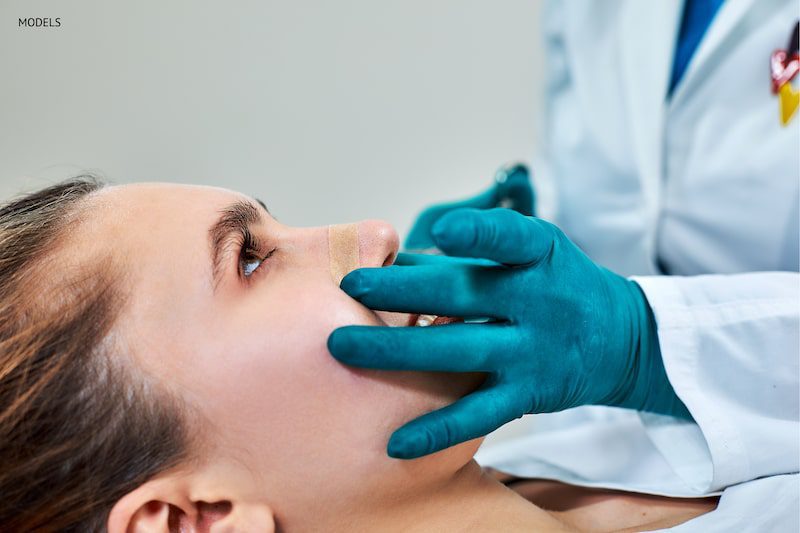Mohs Surgery, Reconstructive Plastic Surgery | The Office of Dr. Vincent Hung
3 Minute Read:
Skin cancer on the nose is an unpleasant experience at best and potentially deforming at worse.
Mohs surgery allows for cancerous growths to be removed with a minimal amount of tissue lost. Unfortunately, that still means that many people with skin cancer on their nose will end up with open wounds on its surface.

To correct this, Dr. Hung offers a series of nasal reconstruction options that can reduce the risk of complications and create a new and improved nasal appearance.
What Are Common Nose Reconstruction Techniques?
Nasal reconstruction is based on the specific needs of the patient. No two reconstruction operations are ever the same because no two cancer removal procedures are ever the same.
This means the techniques described below are general techniques applied to most nasal reconstruction operations; however, they may or may not line up with your own.
1. Direct Linear Closure
Direct linear closure is a surgical technique that uses the lax skin above and below the wound to seal the injury. This technique is one of the simplest when it comes to repairing large wounds.
The main issue with it is that it requires a certain amount of skin laxity and can result in a scar larger than the original wound if the skin is not quite right.
2. Local Flaps
Local flap reconstruction stretches nearby skin to cover the open wound. This technique is ideal for patients with smaller open wounds on the nose. This technique’s main advantage is that it begins the healing process faster than most other reconstruction options on this list.
The main disadvantage of this reconstruction option is that it requires the wound to be small. It also requires the skin near the wound to have enough elasticity to cover the wound without damaging the skin itself.
This means that local flaps are not always a viable option. However, when available, this technique is usually a good go-to option.
3. Full-thickness Skin Graft
A full-thickness skin graft is one of the most challenging and complex forms of nasal reconstruction. It takes a segment of skin from another area of the body and grafts it over the open nasal wound. When performed well, this technique can treat the largest post-cancer wounds and help a nose look natural, even after losing significant amounts of tissue. This option is rarely a go-to, but it offers a viable reconstructive solution for patients with larger wounds.
The main downsides to a full-thickness skin graft are its complexity and need for a donor area. Most patients prefer their nasal reconstruction not to require a new wound to be opened elsewhere.
The extra complexity of this procedure can also cause the operation to take longer. This technique is still far better than not getting a nasal reconstruction, but other options are usually recommended first if viable.
4. Distant Flaps
This technique partially removes tissue from the forehead to cover the open wound on the nose and restore lost tissue. This technique is often seen as the go-to option for people with wounds too large for direct linear closure.
It can provide some of the most natural results of all the reconstructive options and is less complicated than a skin graft.
The main disadvantage of this technique is the potential for scarring on the forehead. Ideally, this will not be a concern. However, some patients prefer to choose other options rather than risk an unsightly scar arising due to unforeseen complications.
Want to Learn More?
If you are interested in more information about nasal reconstruction surgery or cosmetic nasal surgery, please contact Dr. Hung at his Pasadena office at 626-432-5032 or his Newport Beach office at 949-574-8292.
